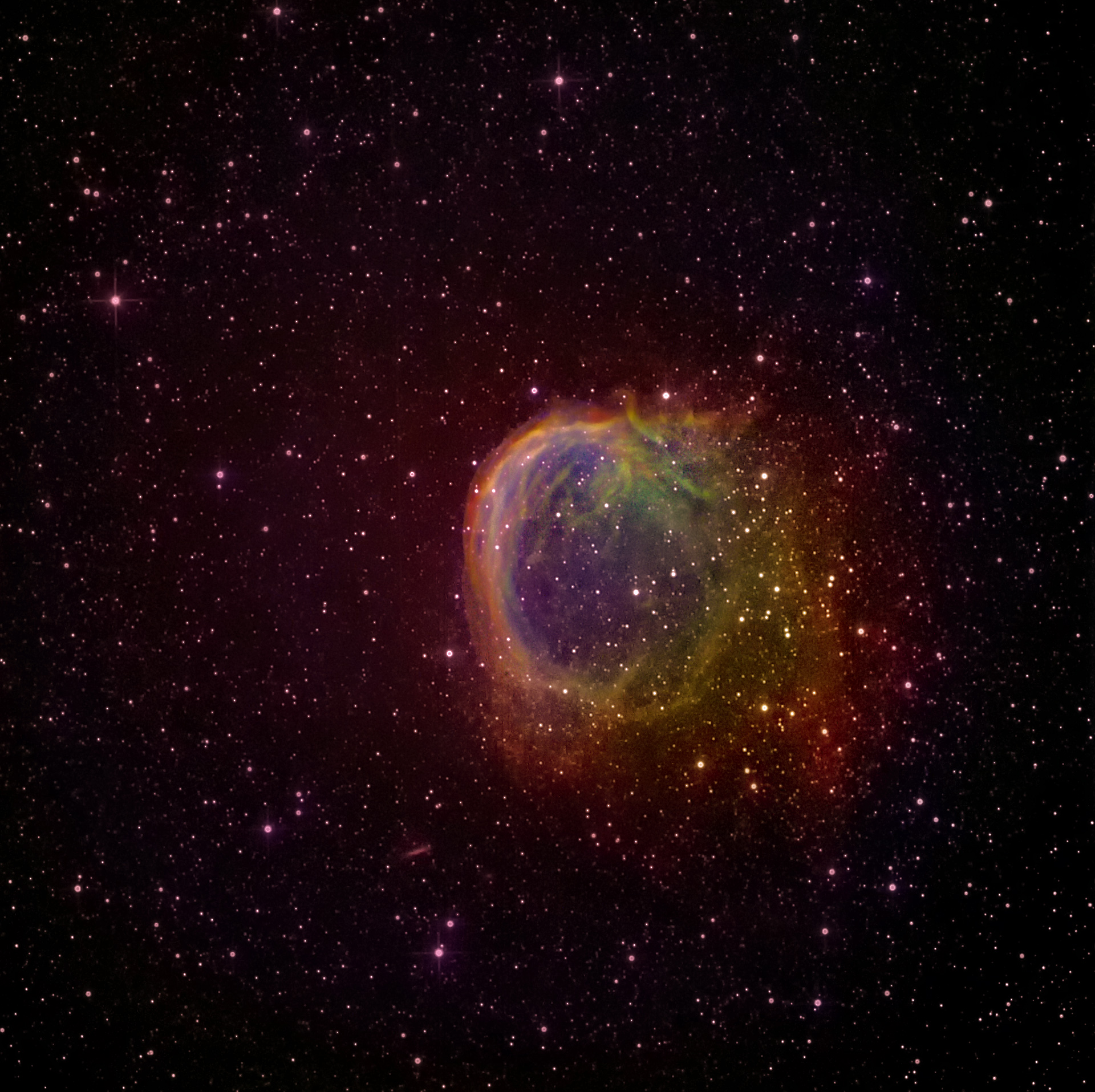Optics: 20″ Planewave CDK20
Mount: Software Bisque Paramount ME II
Camera: FLI PL16803
Filters: Astrodon Sii,Ha,Oiii 3nm
Dates/Times: Sept 2020
Location: Adler Earth and Sky Observatory, Jackson Hole, WY
Exposure Details: Ha=40x30min, 2:2 , Oiii,Sii=35x30min, 4:4,total 110 images, 54 hr
Acquisition & Guiding: MaximDL/TheSkyX, MOAG, SBIG STi
Processing: MaximDL, Photoshop CC2020, Hubble Palette
Shrimp Nebula, SH2-188
Original price was: $65.00.$52.50Current price is: $52.50.
Shrimp Nebula, SH2-188 The image is of Sharpless 2-188 (Sh2-188), an unusual planetary nebula located in the constellation Cassiopeia. A star with mass similar to that of our Sun will convert its hydrogen into helium and then will convert its helium into carbon and oxygen. However, after the helium is gone gravity will not be able to heat it enough to start another fusion nuclear reaction. It will greatly contract and then throw off its outer gasses after fusion has stopped in its core. These are called planetary nebulas not because they are planets but are spherical like planets.The appearance as a ring is really an illusion of projection – the nebula is actually a spherical shell. At the center a blue dot is visible which is the old core of the star, known as a white dwarf. These stars have the mass of the Sun but are the size of the Earth and their minimum size is limited by electron degeneracy which prevents electrons from coming too close to other electrons. A star 10x the size of the sun will not die quietly like the sun but explodes into a supernova and produces either a neutron star or a black hole. As dense as a white dwarf is a neutron star’s density is 100 million times denser than a white dwarf as all of the electrons combine with protons and form neutrons which can be packed much, much denser. The details of how the star throws off the gas that becomes the nebula is not known and each planetary nebula has a very distinctive shape.
In the case of SH2-188 the expanding gas from the planetary nebula is colliding with moving ambient gas in the interstellar medium. As a result it is not symmetrical as is the case for most planetary nebulas. The nebula is much brighter to the left side because the central star is moving rapidly in that direction. Faint wisps of gas can also be seen in the opposite direction. It is 850 light years distant and has an apparent size of 5 arc minutes which is about 1/6 of the size of the moon. At a distance of 850 light years this means it is 1.25 light years in actual size. It is sometimes called the shrimp nebula or the dolphin nebula because of its shape.
This image was taken with my Planewave 20” telescope and my Finger Lakes Instruments PL16803 camera and is a combination of 110 images taken over 54 hours. It is taken with atomic filters capturing light from the emission of mainly hydrogen,oxygen atoms and sulfur atoms. It is a false color image where the hydrogen emission is green in this image. The oxygen is blue and sulfur is red.


